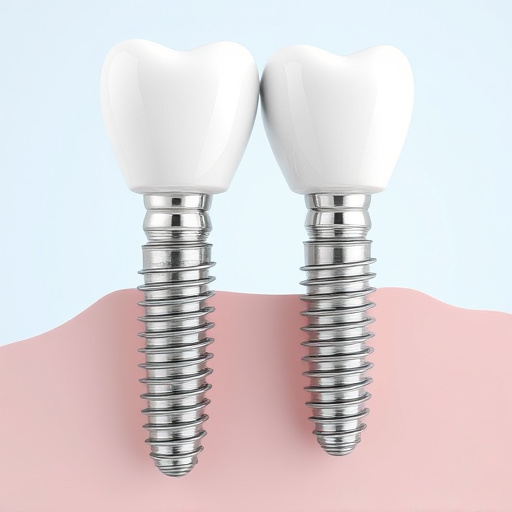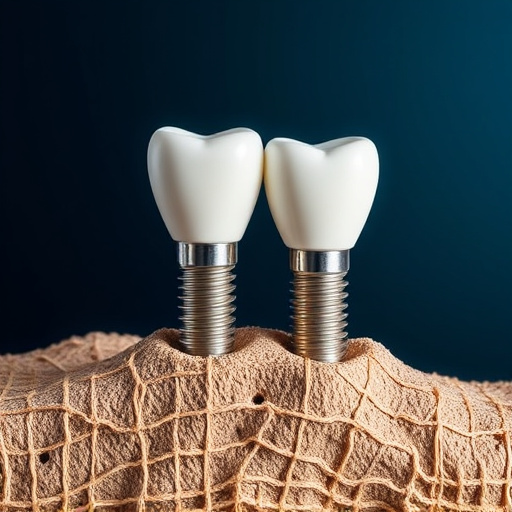Bone grafting treatment is a specialized dental procedure using bone material to restore jaw or skull bones lost due to trauma or conditions like tooth extractions. Essential for maintaining facial structure and supporting implants, this process involves precise imaging like CT scans and 3D modeling for accurate planning. Advanced planning and expert surgical execution stimulate new bone growth, enhancing healing outcomes for various oral health issues, from tooth loss to complex restorations.
Bone grafting treatment is a sophisticated procedure gaining prominence in modern orthopaedic care. This article offers a comprehensive overview of bone grafting, delving into its processes and the critical role precise imaging plays in ensuring success. We explore how advanced imaging techniques, coupled with meticulous planning, optimize bone regeneration, leading to better outcomes for patients. By understanding these aspects, healthcare professionals can navigate the complexities of bone grafting, enhancing patient care and recovery.
- Understanding Bone Grafting: A Comprehensive Overview
- The Role of Precise Imaging in Graft Success
- Planning and Execution for Optimal Bone Regeneration
Understanding Bone Grafting: A Comprehensive Overview

Bone grafting treatment is a specialized procedure that plays a pivotal role in various dental and oral health interventions. It involves the strategic placement of bone material to restore and regenerate bones in specific areas of the jaw or skull. This comprehensive overview aims to demystify the process for both medical professionals and patients considering this treatment option.
In many cases, bone grafting is essential when there has been bone loss due to trauma, dental extractions, or certain medical conditions. General dentistry practitioners often recommend it as part of routine oral exams to maintain facial structure and support for dental implants. The procedure’s precision involves detailed imaging and planning to ensure the successful integration of the grafted bone, fostering a robust foundation for subsequent cosmetic dentistry procedures or natural tooth regeneration.
The Role of Precise Imaging in Graft Success

Precise imaging plays a pivotal role in the success of bone grafting treatments. Advanced technologies like CT scans and 3D modeling allow dentists to meticulously plan and visualize the graft site, ensuring accurate placement of bone material. This level of precision is crucial for integrating the new bone with existing structures, promoting healthy healing, and maximizing the chance of successful tooth repair or replacement in both emergency dental care scenarios and general dentistry practices.
By enabling detailed analysis of jawbone density, structure, and potential complications, precise imaging guides dentists in tailoring bone grafting procedures to individual patient needs. This tailored approach enhances overall treatment outcomes, making it an indispensable component of modern bone grafting treatments for a range of oral health issues, from tooth loss to complex dental restorations.
Planning and Execution for Optimal Bone Regeneration

The planning phase is pivotal for achieving optimal bone regeneration through bone grafting treatment. This meticulous process involves advanced imaging techniques like 3D CT scans to accurately assess bone density and structure, ensuring the right amount and type of bone graft material is selected. Dental professionals then create a precise surgical plan, mapping out the best approach for placing the graft to promote new bone growth.
During execution, the dentist’s expertise comes into play, executing the planned procedure with precision. This includes carefully removing any damaged or diseased tissue, preparing the bone bed, and strategically placing the bone graft material. The goal is to create a stable foundation for future tooth restoration, whether it’s after wisdom tooth removal or addressing a tooth repair need. Even in emergency dental care scenarios, proper planning and execution can lead to successful bone grafting outcomes.
Bone grafting treatment, guided by precise imaging and careful planning, represents a significant advancement in regenerative medicine. By leveraging advanced technologies, medical professionals can ensure optimal bone regeneration, leading to improved patient outcomes. This comprehensive approach, combining detailed imaging with strategic planning, is transforming the field of orthopedics and dentistry, offering new hope for those seeking to restore and regenerate lost or damaged bone structures.














